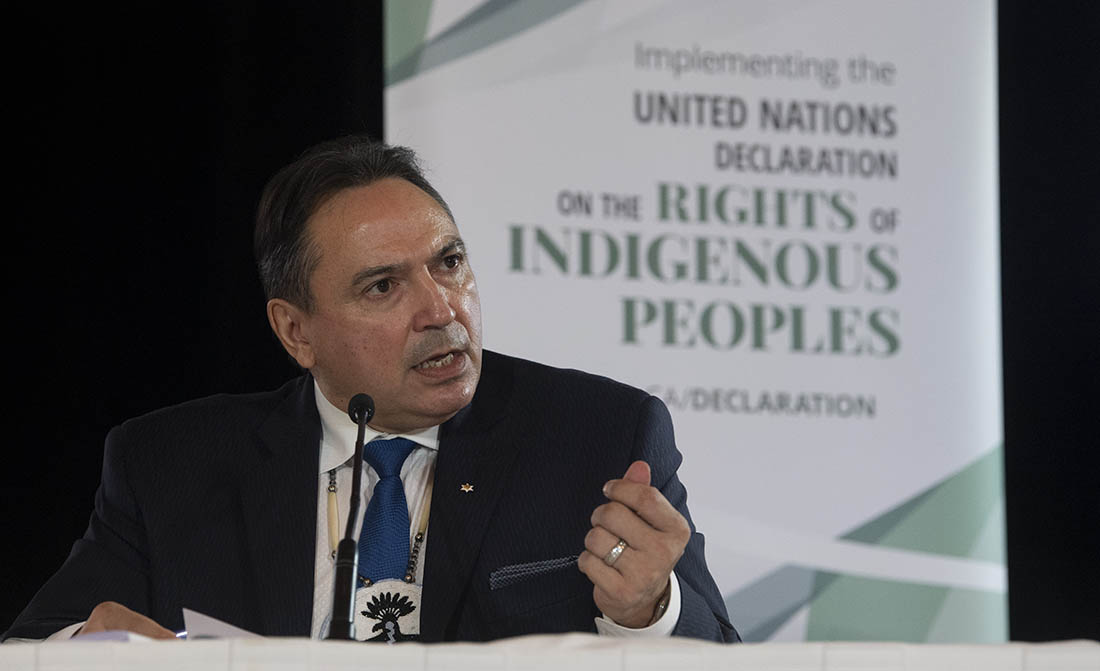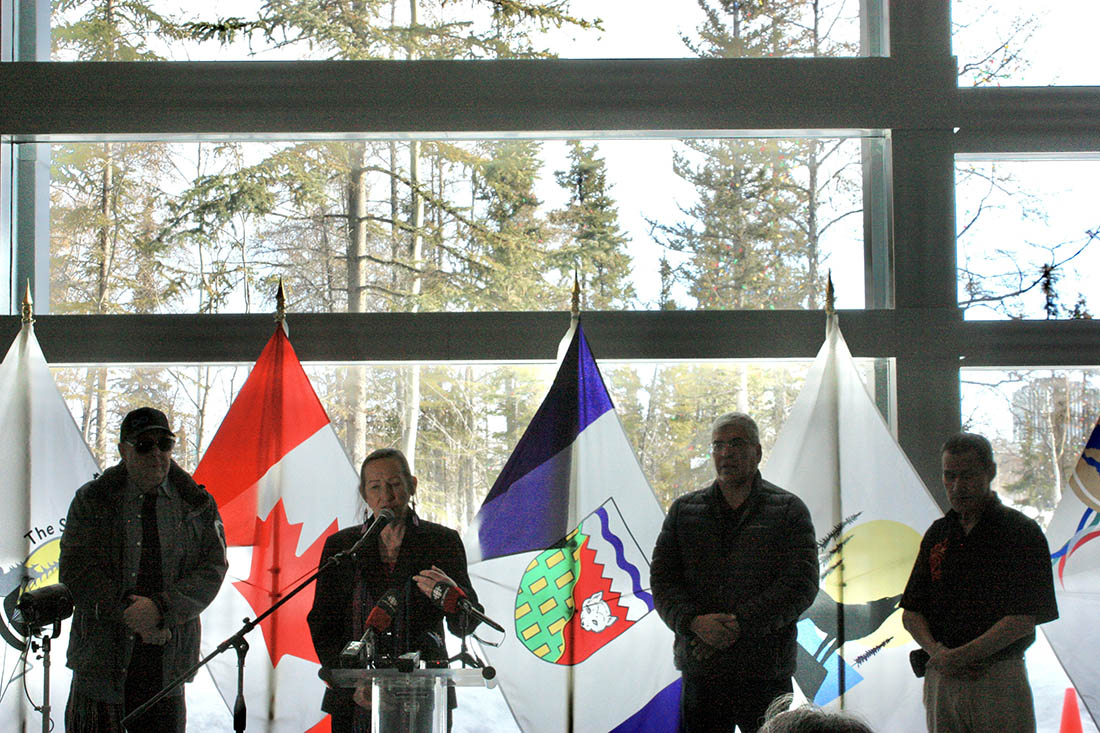The United Nations Declaration on the Rights of Indigenous Peoples (UNDRIP) is an international human rights instrument adopted by the United Nations (UN). It provides comprehensive details about the nature and content of Indigenous rights. It sets out the obligations of countries in relation to these rights. In 2021, the federal government passed the United Nations Declaration on the Rights of Indigenous Peoples Act (UNDA). According to the Supreme Court of Canada, this Act means the UNDRIP is now “incorporated into the country’s domestic positive law.” As such, it is certain that the UNDRIP impacts Canadian law, though exactly how is yet to be fully clarified by the Supreme Court of Canada.

Creation of the UNDRIP
The creation of the United Nations Declaration on the Rights of Indigenous Peoples (UNDRIP) was a key recommendation from a major United Nations (UN) report. The report was undertaken to examine the plight of Indigenous peoples across the globe. It was fueled by growing recognition that international law had long failed to protect the fundamental human rights of Indigenous peoples. In particular, it failed to recognize the right of Indigenous peoples to self-determination.
The UNDRIP was over 20 years in the making. It is one of the first UN legal instruments created with the participation of rights holders themselves. The UNDRIP became part of international law on 13 September 2007, when 144 countries voted in favour of it. However, four countries, including Canada, voted against it and 11 abstained from voting. Ultimately, all four countries that voted against the UNDRIP, and some of those which abstained, changed their position by endorsing it.
Contents of the UNDRIP
The UNDRIP contains 24 clauses in its preamble. Additionally, it contains 46 articles. Together, the clauses and articles comprehensively address the rights of Indigenous peoples. It touches on a wide range of subject matter that affects the lives of Indigenous peoples, both as individuals and collectively. Topics such as land, resources, self-determination and self-government, consultation, social and economic rights, education, employment, health, culture, spirituality, language, anti-discrimination and many others are covered in the UNDRIP. It explicitly recognizes the rights Indigenous peoples hold. Also, it outlines actions governments must take, or avoid taking, to ensure Indigenous rights are protected and fostered around the world. Article 43 of the UNDRIP underscores that “the rights recognized herein constitute the minimum standards for the survival, dignity and well-being of indigenous peoples of the world.”
As a declaration, the UNDRIP is technically non-binding. However, international law scholars caution that the binding/non-binding distinction can lead to unhelpful oversimplification. As noted by legal scholar Brenda Gunn, declarations are a type of international instrument used by the UN when it seeks to weigh in on important topics. A UN Commission on Human Rights report indicates these instruments acknowledge “matters of major and lasting importance where maximum compliance is expected.”
Also, it is important to appreciate that the UNDRIP does not create new rights. It elaborates on existing ones that are enshrined in various international human rights treaties and instruments. These include binding conventions Canada has ratified. Several of the UNDRIP’s articles may also reflect binding customary international law.
The UNDRIP in Canada
Canada was significantly involved in the drafting of the UNDRIP for many years. However, the Conservative government of Prime Minister Stephen Harper voted against it in 2007. The Canadian government began to change its position in 2010, stating support for the UNDRIP, though with certain caveats. Further change occurred following the federal election in 2015. Prime Minister Justin Trudeau’s Liberal government committed to implementing all 94 Calls to Action of the Truth and Reconciliation Commission (TRC). Prominent among the Calls to Action was the call for all governments “to fully adopt and implement [UNDRIP] as the framework for reconciliation.”
In 2016, then federal minister of Indigenous and Northern Affairs (now Crown-Indigenous Relations and Northern Affairs Canada) Carolyn Bennett stated before the United Nations Permanent Forum on Indigenous Issues that Canada would remove its permanent objector status. Additionally, Canada committed to adopting and implementing UNDRIP domestically without qualification.
Like other international law instruments in the Canadian context, the UNDRIP was not incorporated automatically into Canada’s domestic law. Nonetheless, the UNDRIP has been used by courts in several cases to interpret Canadian law based on the presumption of conformity with international law. The presumption of conformity requires that domestic law be interpreted to conform with Canada’s obligations under international law, in the absence of statutory language to the contrary. However, some judges denied the UNDRIP’s application due to it being a “non-binding”, “unratified” or “aspirational” instrument. Brenda Gunn has said this reflects significant confusion about the legal status of the UNDRIP within the Canadian legal profession.
UNDRIP Implementation Acts and Action Plans

The United Nations Declaration on the Rights of Indigenous Peoples Act (UNDA) received Royal Assent and came into effect on 21 June 2021. The UNDA has a lengthy preamble that, among other things, describes the UNDRIP as a framework for reconciliation. It states the UNDRIP constitutes the minimum standards for the survival, dignity and well-being of Indigenous peoples. It affirms the UNDRIP as a source for the interpretation of Canadian law.
The substantive provisions of the UNDA are intended to do two things. First, it affirms the UNDRIP as a universal human rights instrument with application in Canadian law. Second, it commits the Canadian government to implementing the UNDRIP, including developing a national action plan in consultation and co-operation with Indigenous peoples.
The provisions of the Act further lay out specific content that will need to be in Canada’s action plan. The action plan must include measures to address the injustices, violence, racism and discrimination Indigenous peoples face within Canadian society. It must also promote mutual respect and understanding. Finally, it must contain specific measures relating to monitoring, oversight and accountability in ensuring the UNDRIP is successfully implemented.
Canada released its 2023–28 Action Plan in June 2023 after extensive engagement with Indigenous peoples. The Plan sets out actions to be taken by specific federal departments. Additionally, it outlines general outcomes all departments must work toward in meeting their obligations. It further outlines the differing priorities of First Nations, Inuit and Métis in relation to the UNDRIP and specifies what actions need to be taken in addressing those priorities.
Generally speaking, Canada adopted a decentralized approach in implementing the UNDRIP. While the UNDA affirms the Declaration’s general application in Canadian law, the implementation sections only apply to the federal government. It does not force the provinces or territories to implement the UNDRIP. British Columbia was the first jurisdiction in Canada to pass an UNDRIP implementation law in 2019. It released its action plan in 2022. The Northwest Territories passed an implementation law in 2023. An action plan is to follow. With some minor variations, the provincial/territorial acts are similar to UNDA.
The UNDRIP in Canada Following the Implementation Laws
It seems clear that parts of the implementation acts are contingent upon action taken by both the executive and legislative branches of government. Thus, the effect of the UNDRIP on federal, British Columbia or Northwest Territories law under those provisions will occur once action is taken by government.
But there are also provisions in the implementation acts that affirm the UNDRIP as having application within these jurisdictions, like section 4(a) of UNDA. In Reference re An Act respecting First Nations, Inuit and Métis children, youth and families (2024), the Supreme Court of Canada said section 4(a) “incorporated [UNDRIP] into the country’s domestic positive law,” but did not elaborate much further. As a result, there is ambiguity surrounding how the UNDRIP impacts law in these jurisdictions. Different ways to interpret this have been suggested by legal scholars and lower courts. Some argue the affirmation clauses only acknowledge that the UNDRIP helps the government in conforming with its requirements. At the other end of the spectrum, some legal scholars argue the clauses and the Supreme Court’s decision could be directly incorporating the UNDRIP into Canadian law.
In between these two arguments are those who argue the clauses indicate the UNDRIP can be used to interpret law. The Supreme Court appears to have validated this argument in Dickson v Vuntut Gwitchin First Nation (2024), where six out of seven judges relied on the UNDRIP to aid in their interpretations of section 25 of the Charter of Rights and Freedoms. However, the majority reasons in the case did not specify whether they were relying on the general principle of presumption of conformity with international law, or section 4(a) of UNDA, or a combination of the two. Two dissenting judges suggested their approach was a combination of the two.
Conclusion
There are remaining uncertainties about the scope of the UNDRIP’s application in Canada. However, there is no question that this foundational international instrument on the minimum human rights for Indigenous peoples impacts Canada. Even just as a basis for interpreting Canadian law, the UNDRIP has significant transformative potential. In 1982, Canada enshrined the protection of “aboriginal and treaty rights” in section 35 of the Constitution Act, 1982 (see also Rights of Indigenous Peoples in Canada). This section of the Constitution has sometimes been called an “empty box.” This is because it does not specify what inherent rights are protected or governments’ obligations in relation to them.
While Supreme Court decisions have attempted to rectify this over the past decades, the Truth and Reconciliation Commission (TRC) and legal scholars have raised significant shortcomings with this case law. This is why the TRC urged for the UNDRIP to be adopted to become the framework for reconciliation and help transform existing law. The UNDRIP has the potential to, as Minister Carolyn Bennett said, “[breathe] life into Section 35 and recogniz[e] it now as a full box of rights for Indigenous peoples in Canada.”

 Share on Facebook
Share on Facebook Share on X
Share on X Share by Email
Share by Email Share on Google Classroom
Share on Google Classroom






